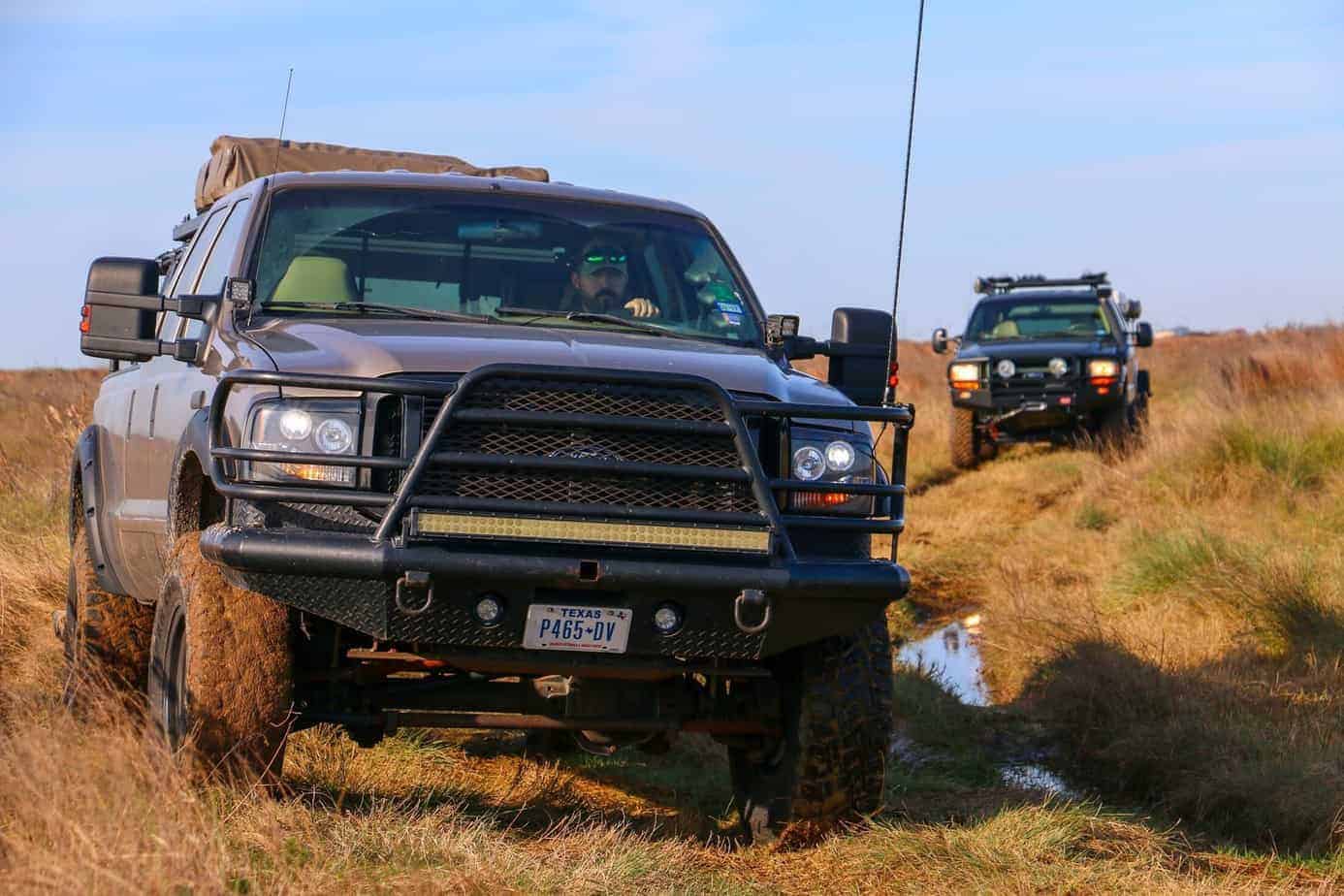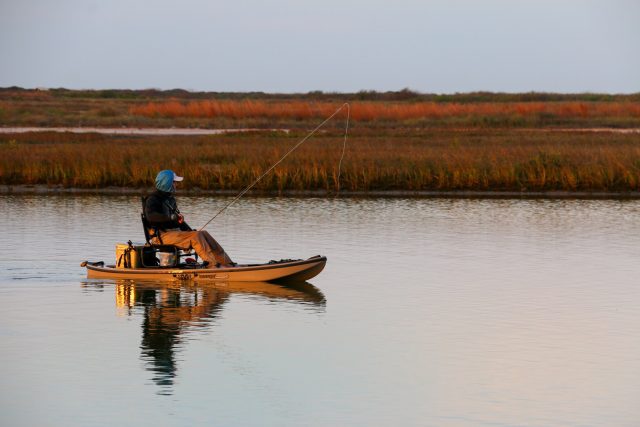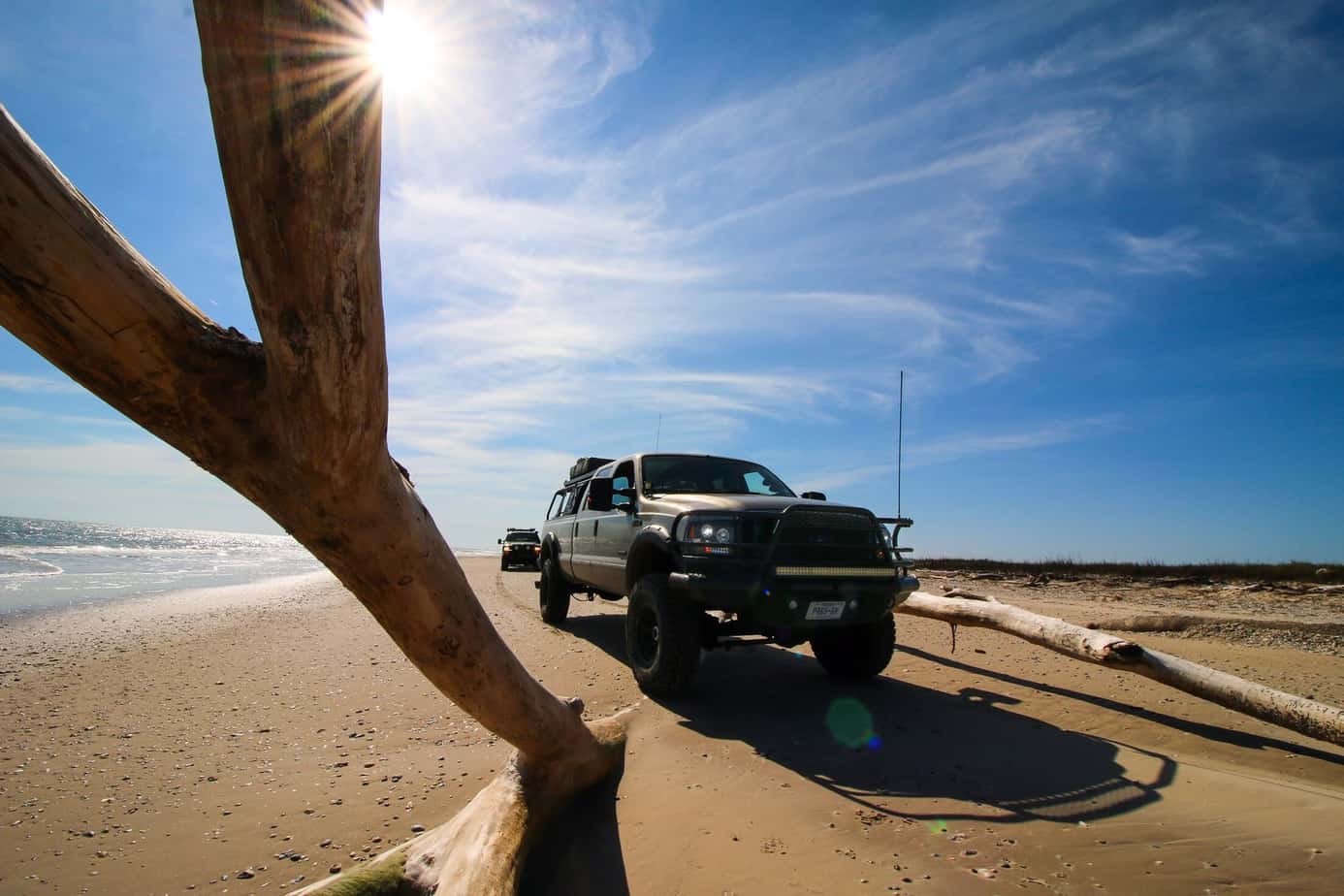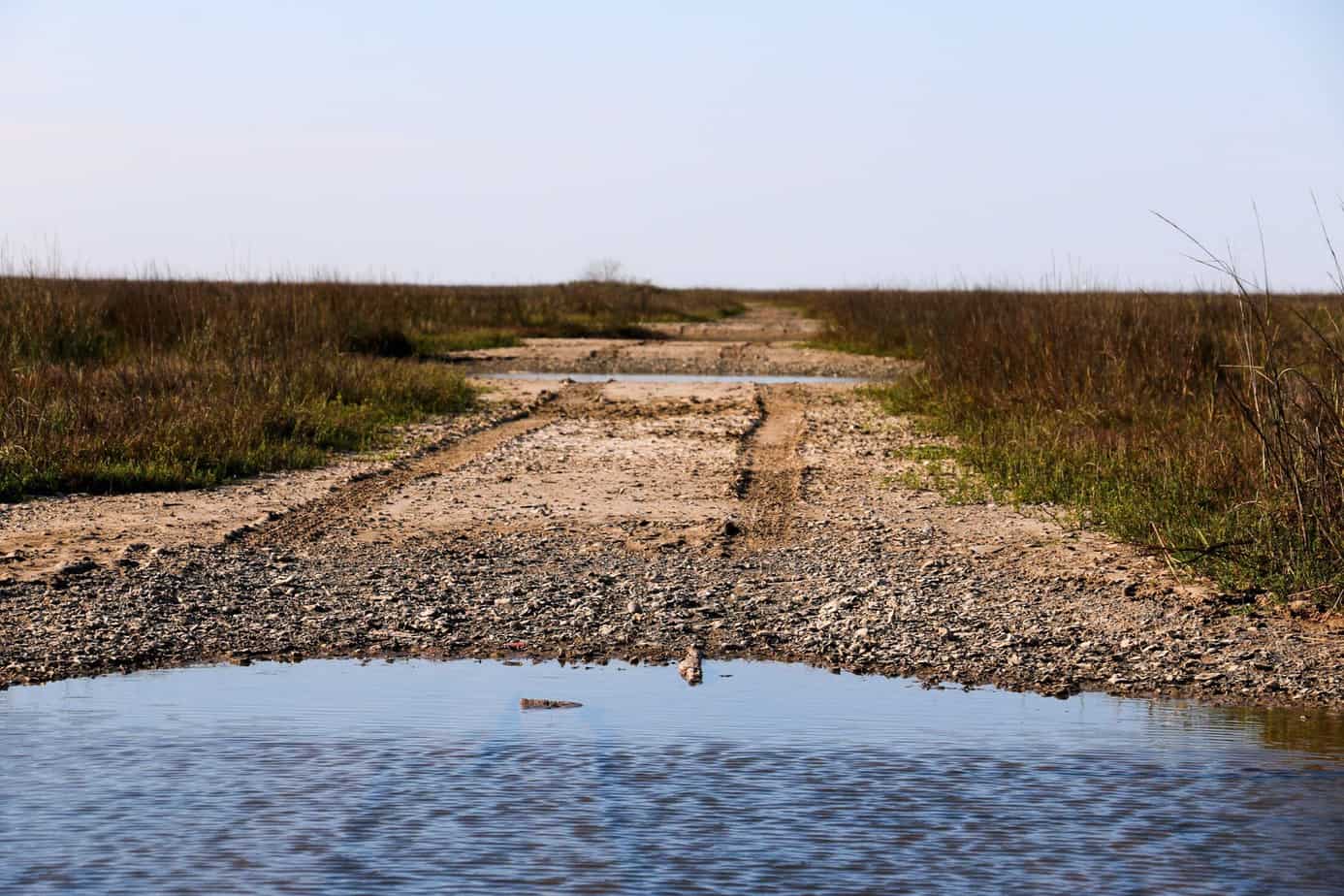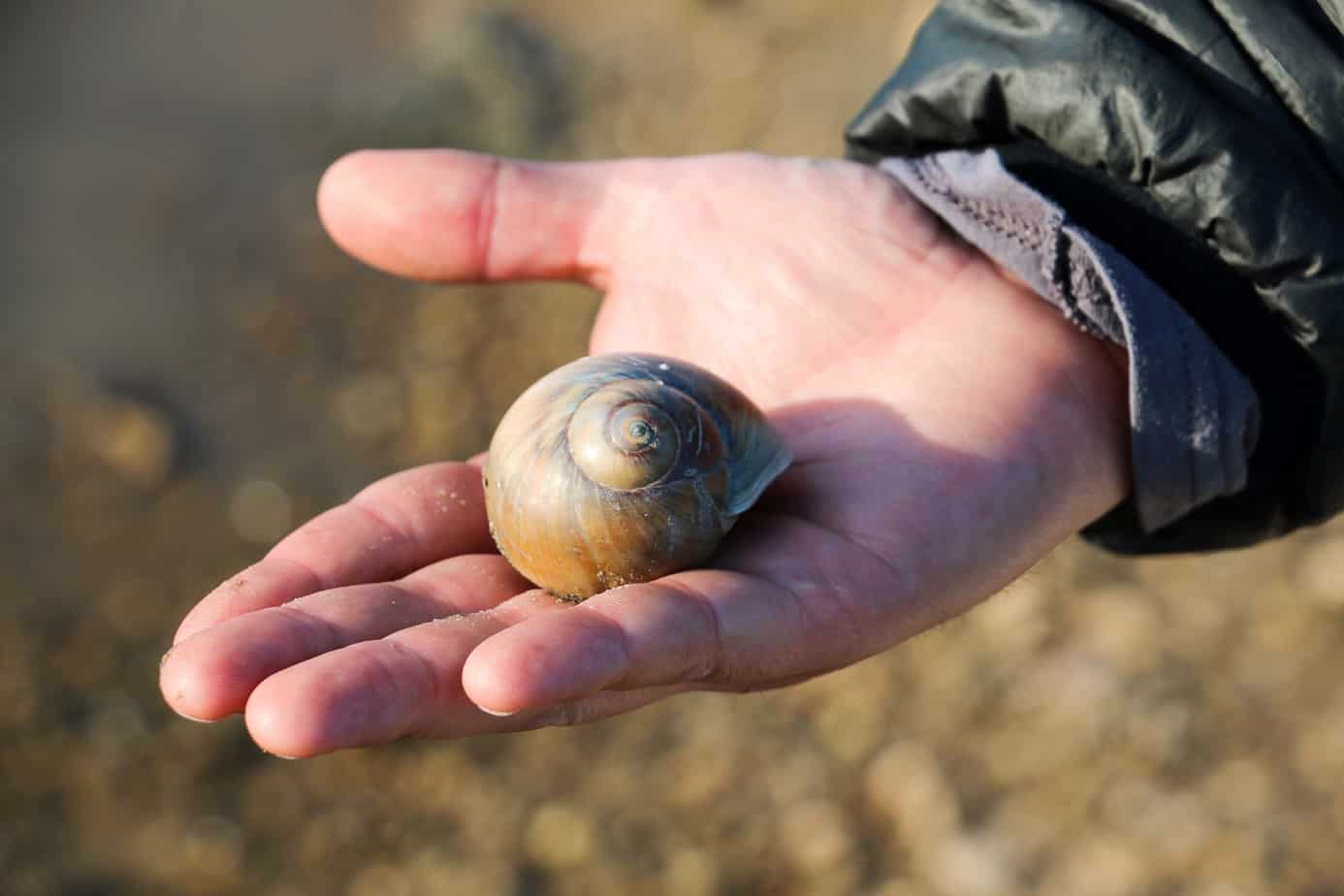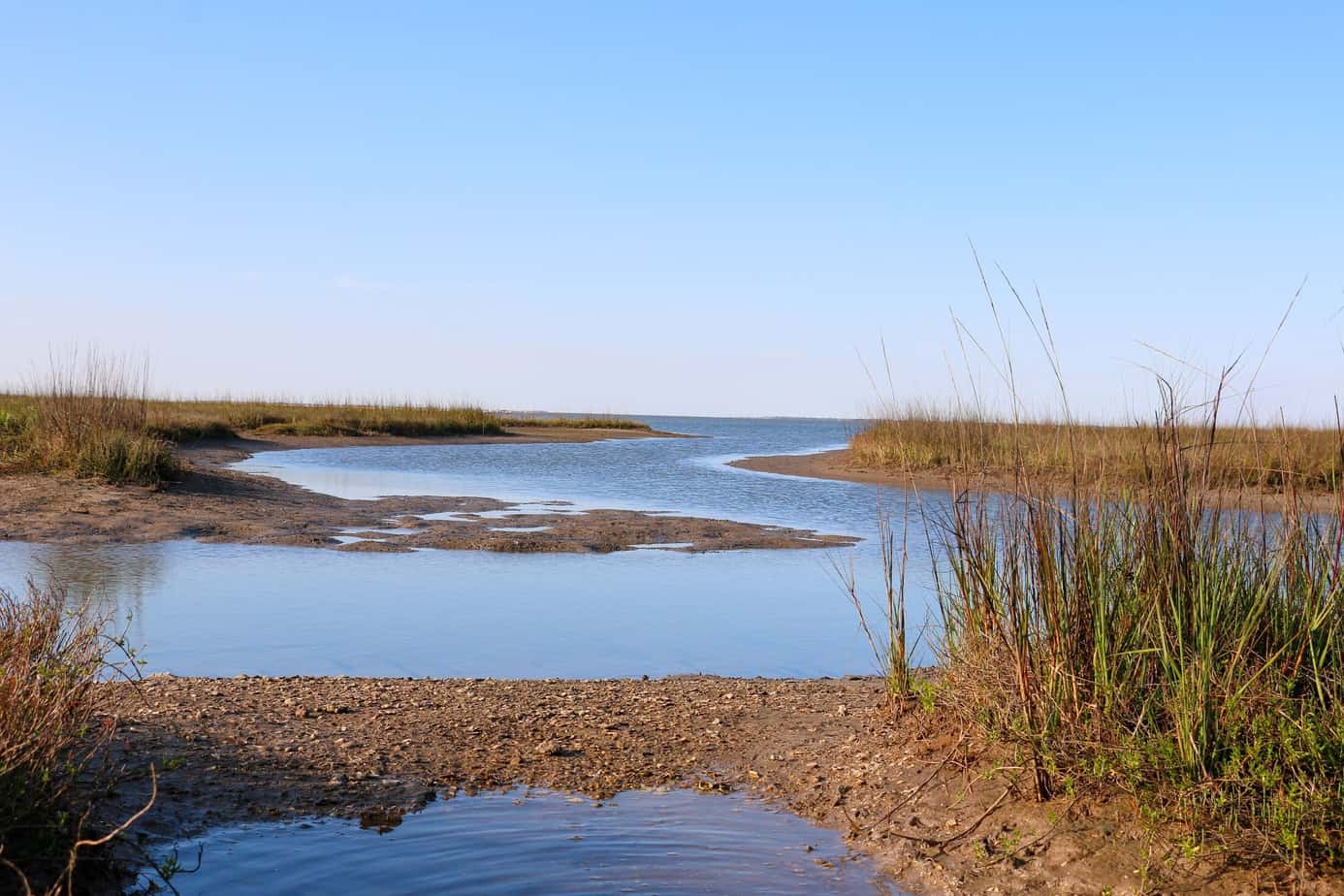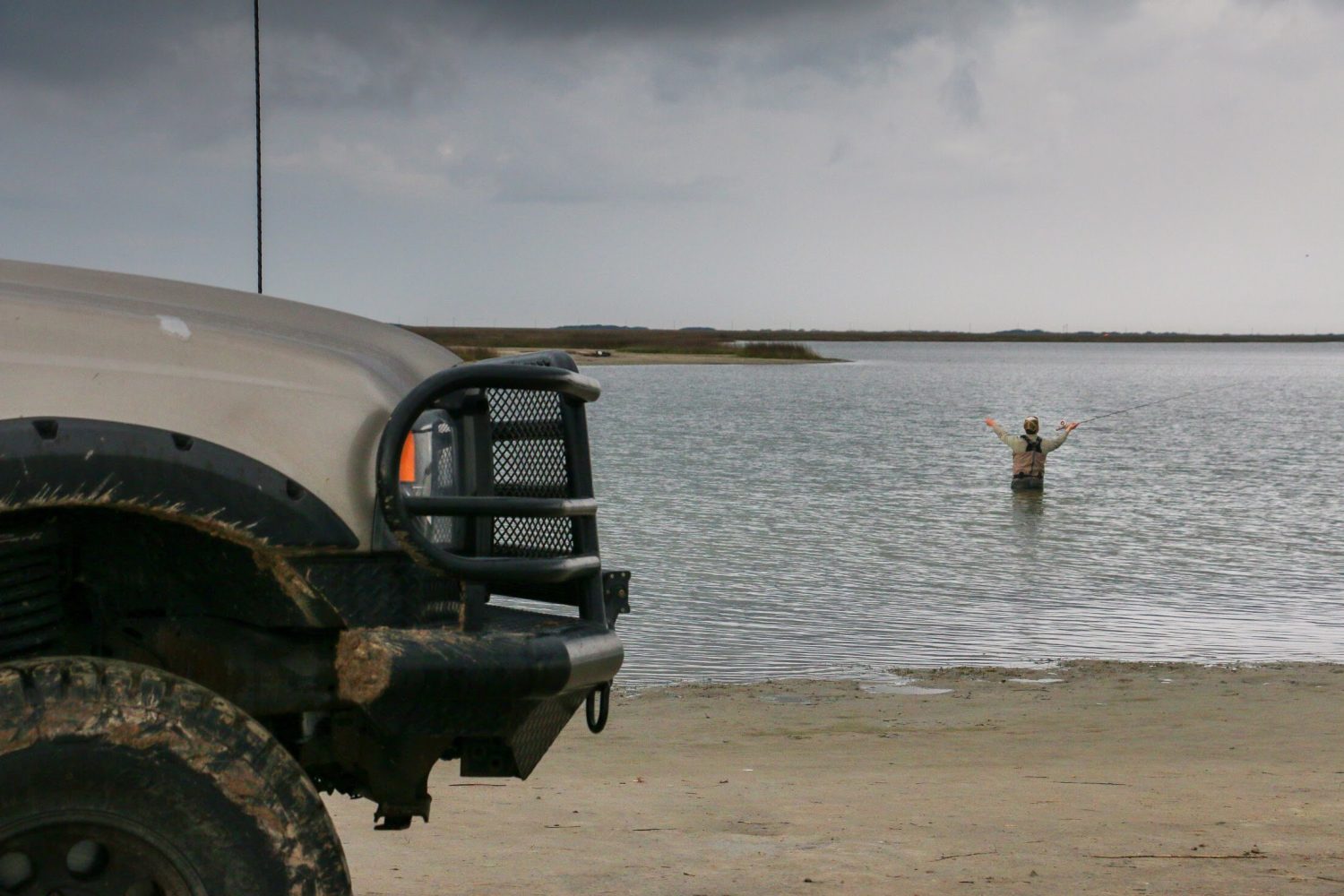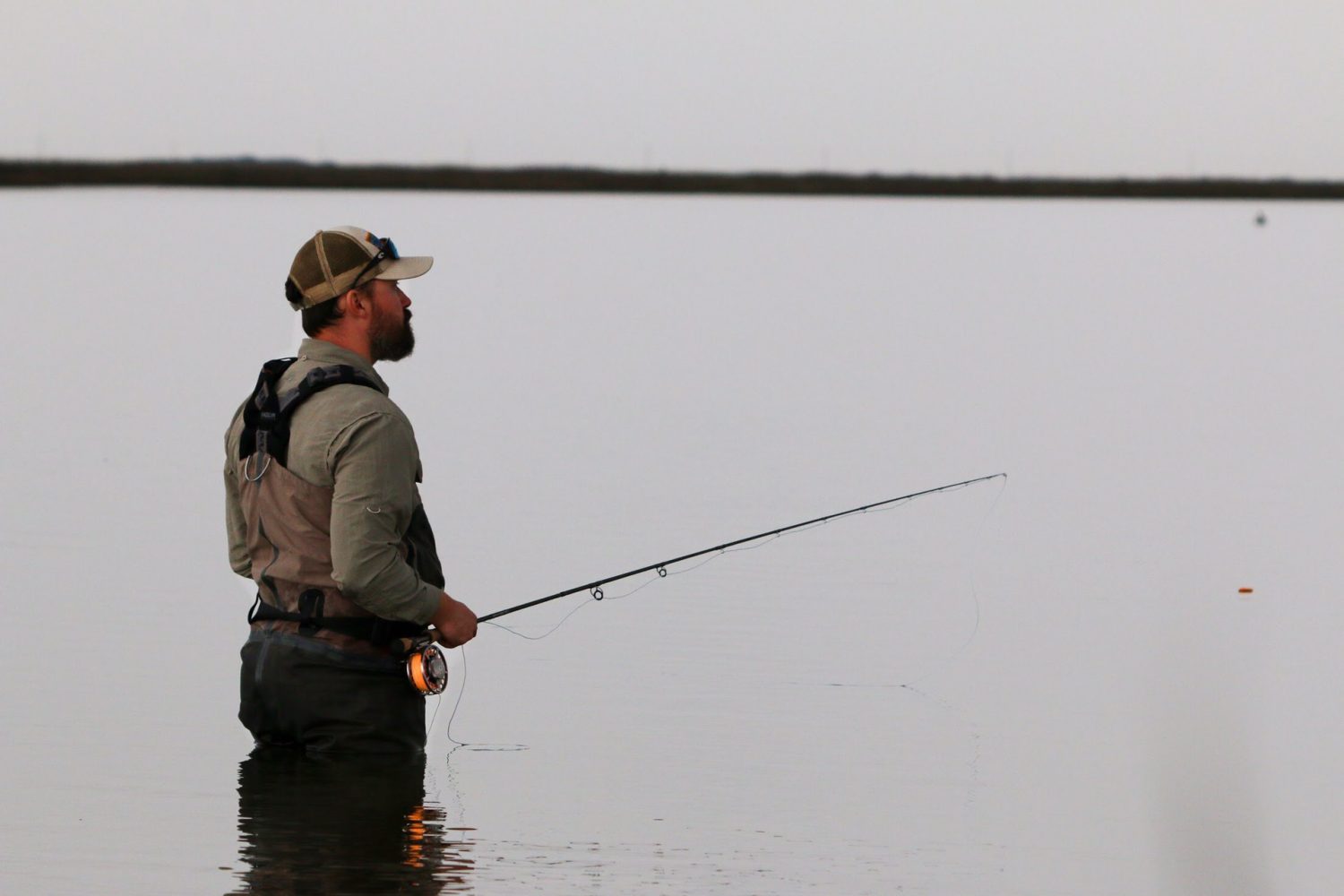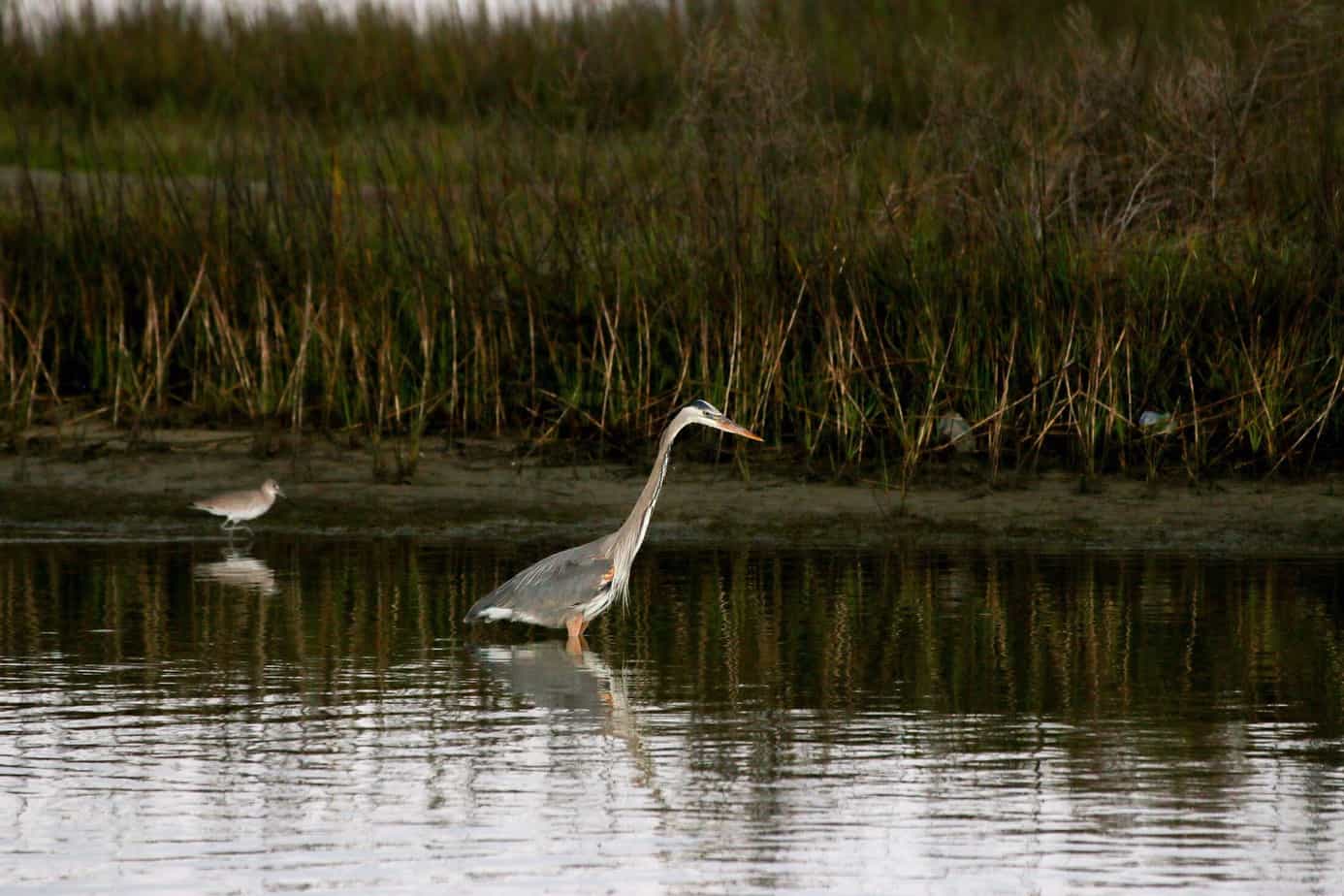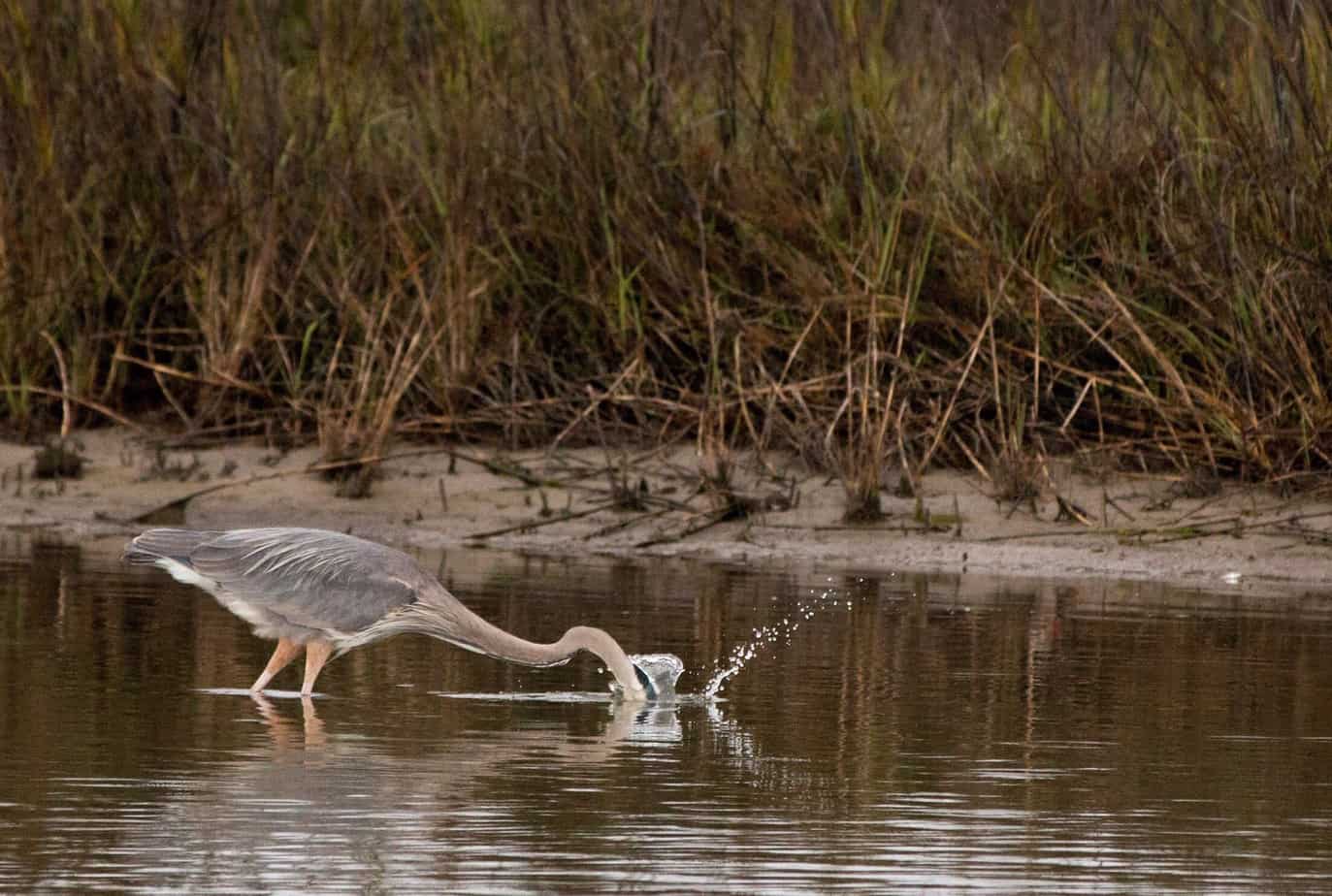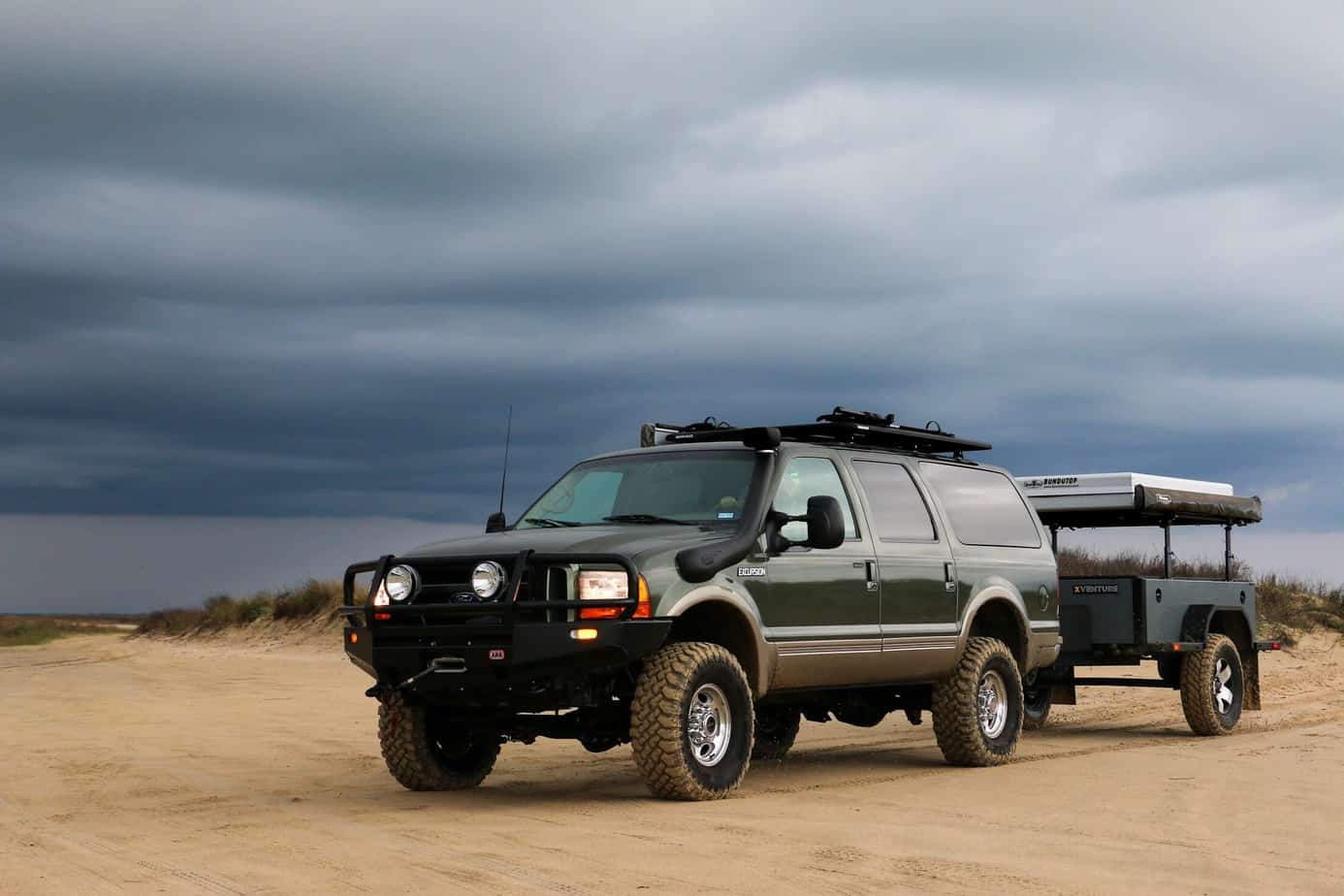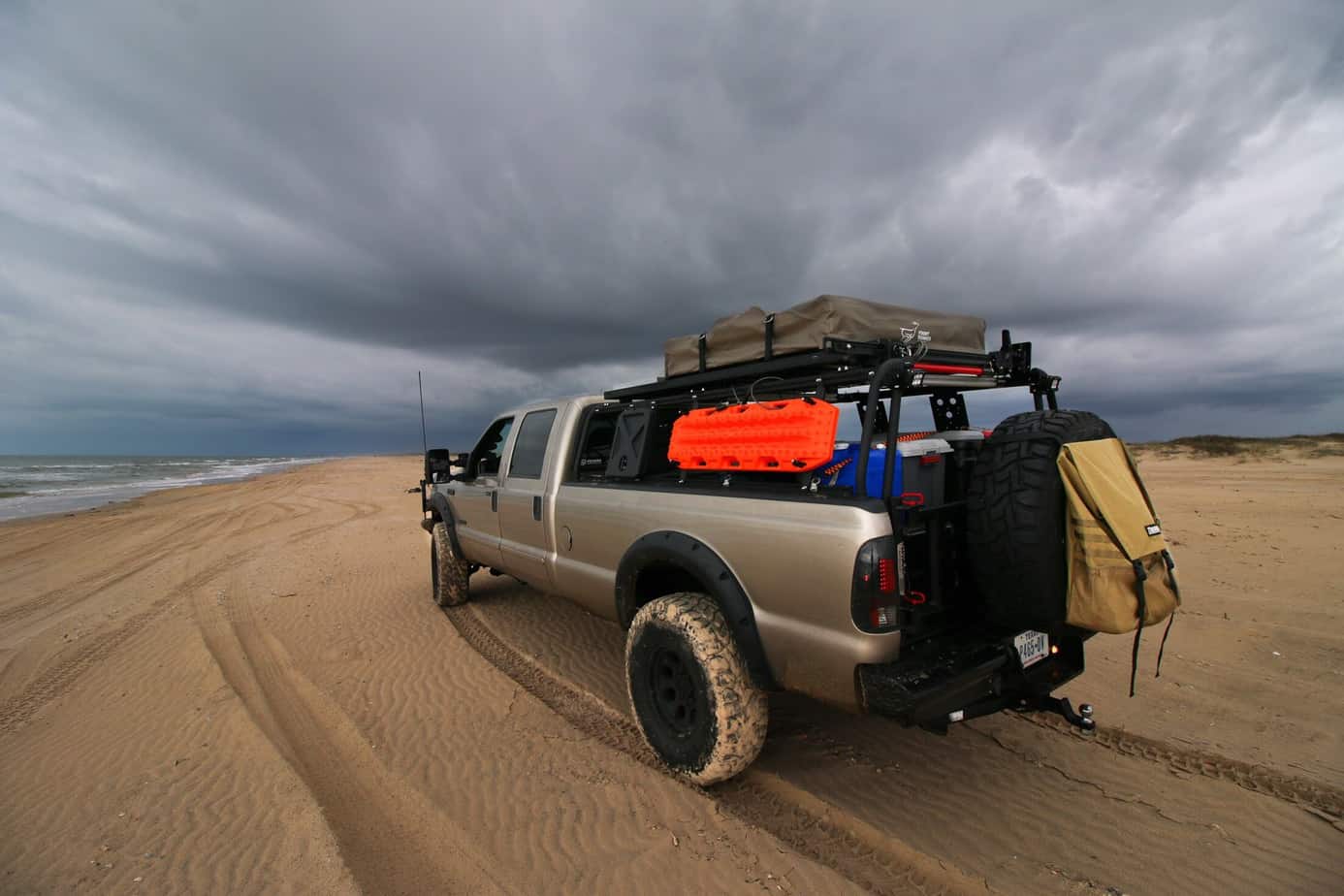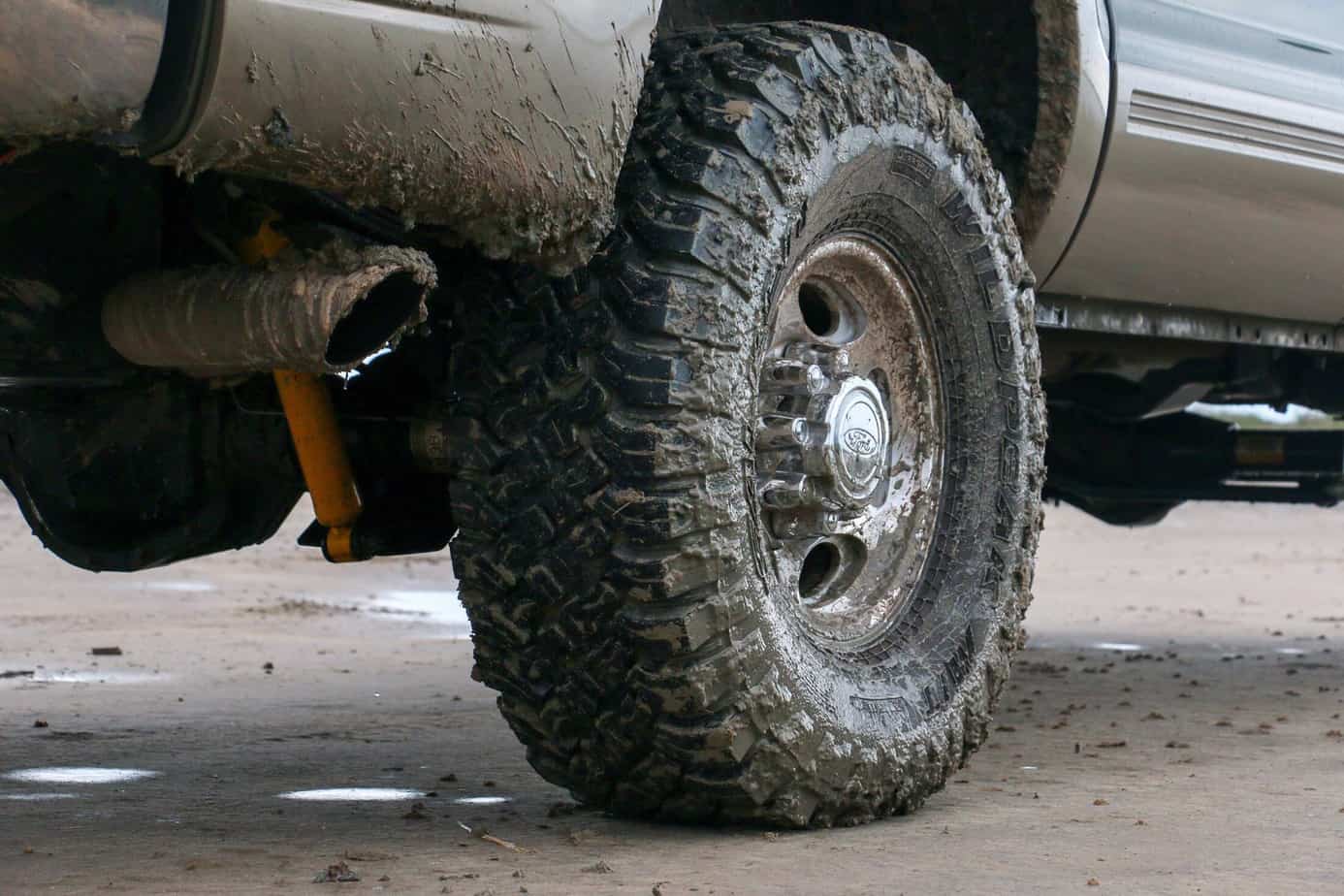Our plan was to make it to the beach before dark, so naturally we arrived well after it. I had expected as much. Something about keeping to a schedule while escaping meetings, emails, and calendars just doesn’t jive with me. Unfortunately, navigating the unfamiliar shores of an island at night doesn’t jive well either, so we decided to play it safe by airing down and locking the hubs.
For those who haven’t done much island driving, exploring new tracks can be a tad tricky. Choose wisely and you may be rewarded with a secluded campsite. Choose poorly and you’ll likely be buried to the frame in soft sand or a mixture of sea water and mud. We were fortunate on this trip, and stumbled upon a small cove near the back side of the island. The pass through the dunes was narrow, but with a little momentum and careful driving we were able to slip through with relative ease. Our reward was a flat, smooth spot directly against the inland waterway. We wasted no time setting up camp, but our evening arrival had put us far enough behind that it was nearly one in the morning when our tents were in place. Exhaustion was setting in, but there was still time to appreciate the smell of the sea breeze and the taste of a cold beer before bed. Hey, this was vacation after all. We swapped stories and shared laughs until the distant roll of the surf lulled us toward an inevitable sleep. Underneath a brilliant sky of stars I settled into my roof tent, and began to wonder what the next day would hold.
We wasted no time setting up camp, but our evening arrival had put us far enough behind that it was nearly one in the morning when our tents were in place. Exhaustion was setting in, but there was still time to appreciate the smell of the sea breeze and the taste of a cold beer before bed. Hey, this was vacation after all. We swapped stories and shared laughs until the distant roll of the surf lulled us toward an inevitable sleep. Underneath a brilliant sky of stars I settled into my roof tent, and began to wonder what the next day would hold. 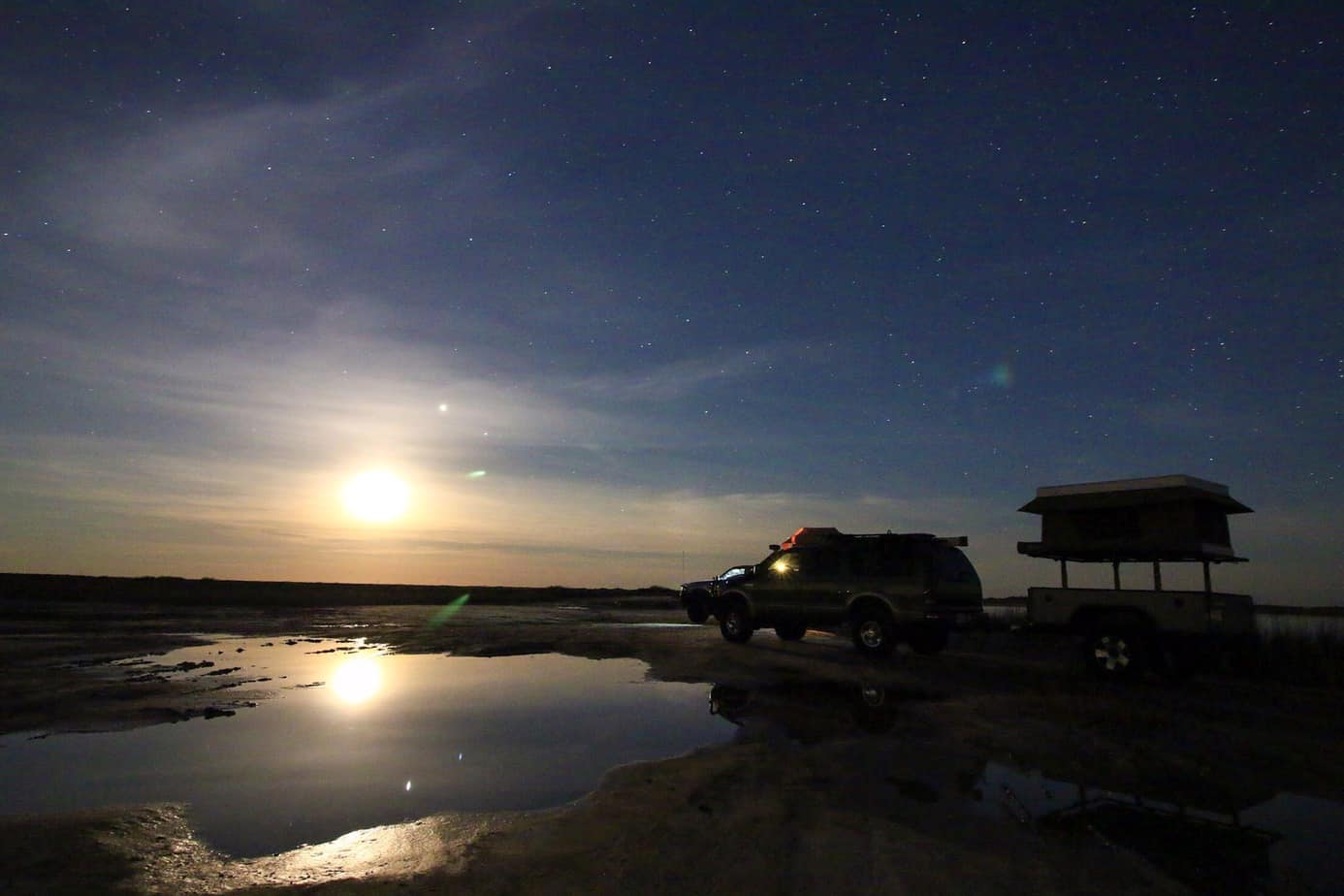
 Morning came early—too early. I had set an alarm to catch the sunrise, and I cursed it for working as I grudgingly dragged myself from the tent. I set the camera towards the coast and hoped for a stunning display. It did not disappoint. The vibrant colors lit up the sky, and I found myself feeling less bitter about my lack of sleep. I snapped a few photos and turned back to the truck where the soft boiling of water told me that coffee was almost ready. I poured the dark liquid into cups and breathed deeply with contentment. It was going to be a good day.
Morning came early—too early. I had set an alarm to catch the sunrise, and I cursed it for working as I grudgingly dragged myself from the tent. I set the camera towards the coast and hoped for a stunning display. It did not disappoint. The vibrant colors lit up the sky, and I found myself feeling less bitter about my lack of sleep. I snapped a few photos and turned back to the truck where the soft boiling of water told me that coffee was almost ready. I poured the dark liquid into cups and breathed deeply with contentment. It was going to be a good day. 
Since we had made the initial jump across the dunes last night, we decided to tackle the back roads first. This series of two-tracks gives ranchers access to their cattle, as well as providing a way for locals to traverse the island when the waves are too high for beach driving. Since the tides were low and the waters calm, we had the route all to ourselves. Well, almost…

The trail is lined with tall grass, water holes, and deep sand, but it’s the scenery that makes it interesting. Old windmills run small water tanks surrounded by livestock, and right next to them flocks of tropical birds soar through beautiful marsh lands. You may see what looks like a Texas ranch on your left, and then look right to see a fishing boat passing just off shore. It’s a strange mesh between land and sea, one unlike any other place I’ve visited.
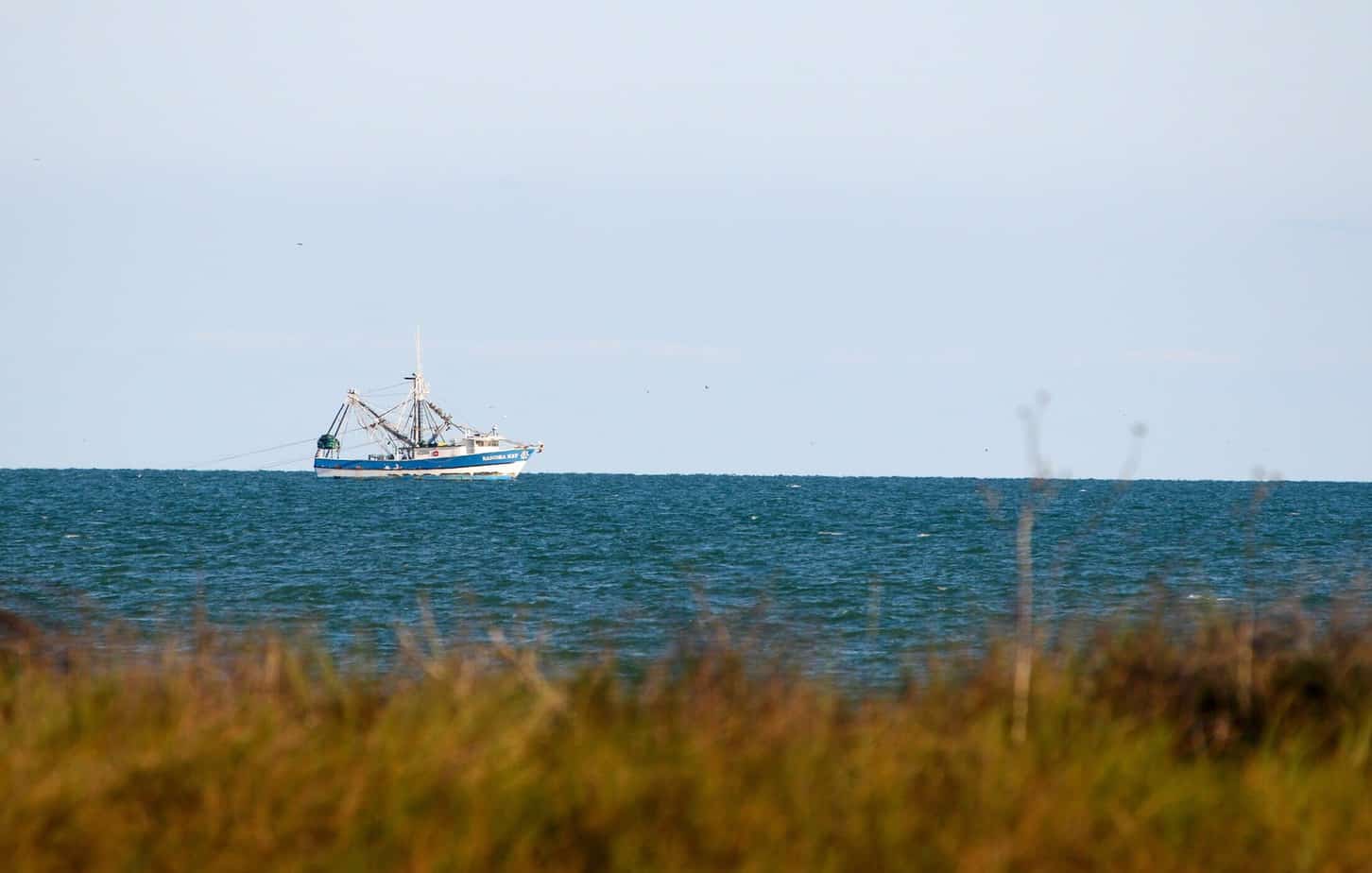 By the afternoon our supply of these strange roads was dwindling, and so we made a dash across the dunes once more for the firm shoreline on the gulf. The driving surface was now smooth giving us a fast pace, but the views didn’t get any less interesting.
By the afternoon our supply of these strange roads was dwindling, and so we made a dash across the dunes once more for the firm shoreline on the gulf. The driving surface was now smooth giving us a fast pace, but the views didn’t get any less interesting.

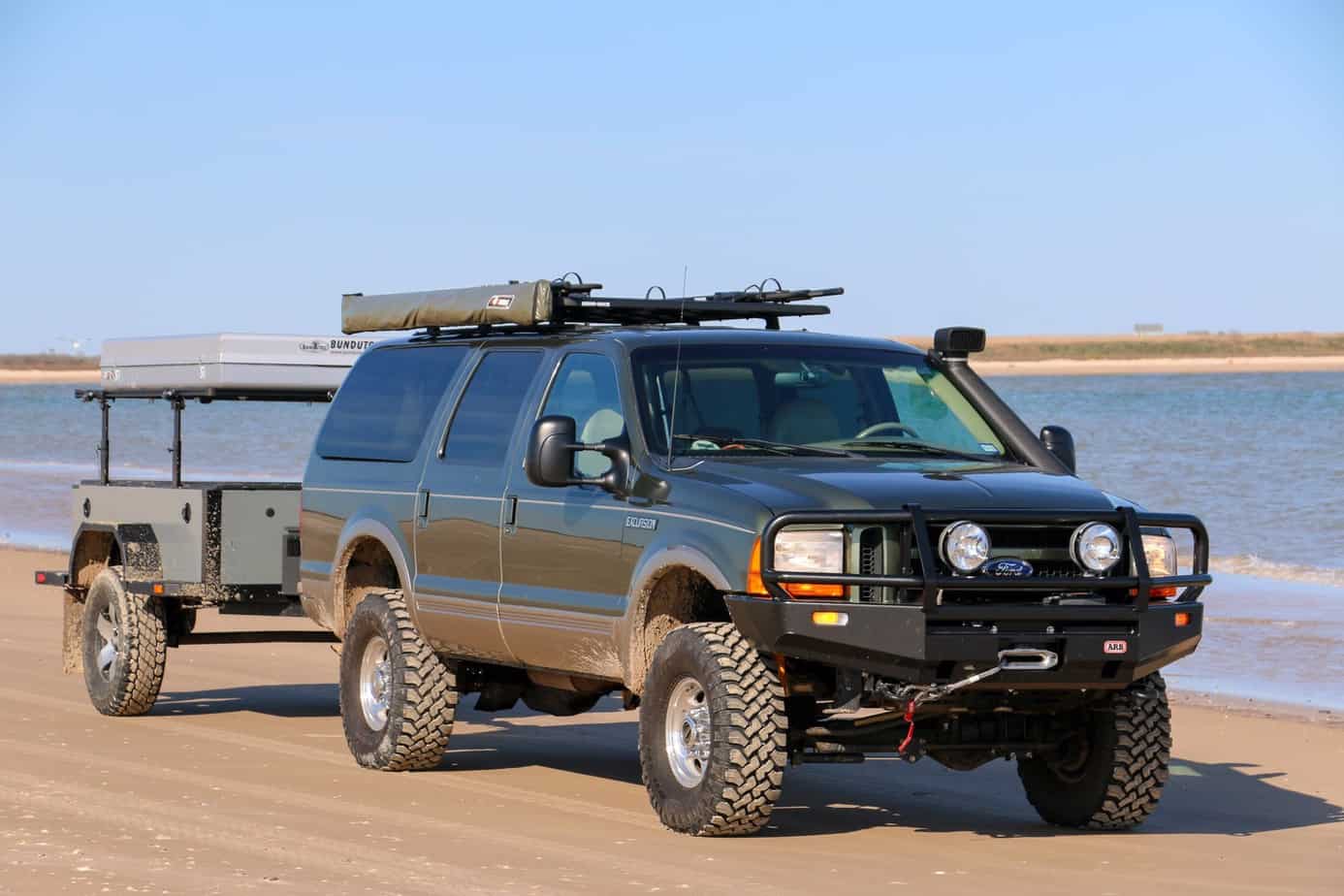
These beaches are far from the maintained sands of a resort, and they often hold some interesting sights worth stopping for. For example, this frame of algae-coated concrete which felt otherworldly from a distance. It reminded me of a sort of portal, calling us to dive in and see where it leads.
 Large sections of driftwood also dot the beach, worn by the crashing waves and blowing sands of the coast. We’d love to know where these trees had once grown, and what stories they could tell from their long journeys to the sea.
Large sections of driftwood also dot the beach, worn by the crashing waves and blowing sands of the coast. We’d love to know where these trees had once grown, and what stories they could tell from their long journeys to the sea.
Sadly, we didn’t have the time to contemplate that. The sun was fading, and we needed to get moving if we wanted to make camp before dark. Our plan was to take a small road through the marshlands onto a peninsula. From the look of the satellite images on our Hema app there was an isolated campsite at the end, and a few simple water crossings we’d need to ford along the way. Of course things are rarely as easy as they appear.
The puddles that we had expected weren’t really puddles at all. Sure they looked innocent from a distance, but when inspected more closely they revealed their true nature: deep mud holes. Inside each were broken railroad ties, slowly being swallowed by the goop. Tire tracks could be seen exiting the other side, but they then turned around and headed back out instead of preceding through to the end. We decided to consult the highly scientific stick in the mud test, which proved it was far too soft for our 8,000-pound trucks to cross. We were forced to abandon our efforts rather than take the unnecessary risk of becoming stuck in salt water.
Our lack of vehicles couldn’t keep us from exploring though, so we parked the Fords and hoofed it the rest of the way through. In the end it turned out that our intended campsite had been washed away in past storms, and I was pleased we hadn’t gone through the muck just to reach a dead end. We snapped a few photos in the evening light, and then hightailed it for the next camp spot we could find. Tomorrow’s forecast called for storms, and we hoped to sneak in a little fly fishing before they arrived. It would be an early morning for us all.
The sun rose right on time, but you wouldn’t have known it through the dense blanket of clouds hanging overhead. They painted everything in muted hues of gray, and made it difficult to distinguish the still channels of water from the sky. Yet there had been no lightning thus far, so we decided to take what we could get. Stephen rolled out his drawer and began suiting up. 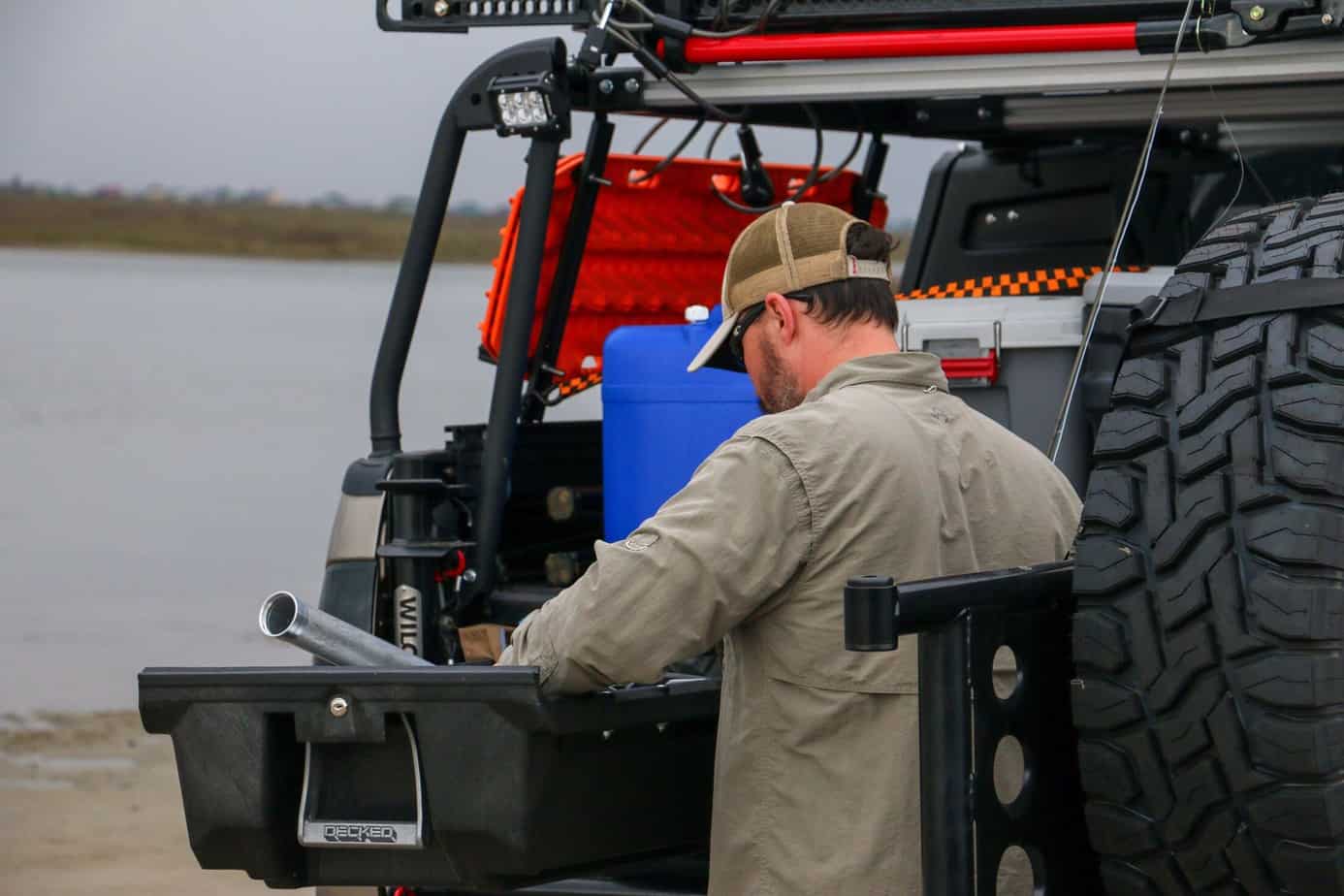
Waders on and fly-rod assembled, he slowly worked his way into the water without disturbing the fish. I watched as he patiently worked the line, gently laying it out in a perfect presentation, but to no avail. Cast after cast proved fruitless, and it seemed that the fish had no interest in feeding. In fact the only fisherman having any luck wasn’t using a rod, so we sat back and watched the master at work.
Then, like the warning of a distant beast a roar of thunder echoed overhead, and we took our cue to head home.
It seemed the island had other plans however, because just as we crossed the last dune from the beach the rear of my Excursion sank deep into the sand. I tried my usual tricks, but it only dug deeper. It was time for Maxtrax.

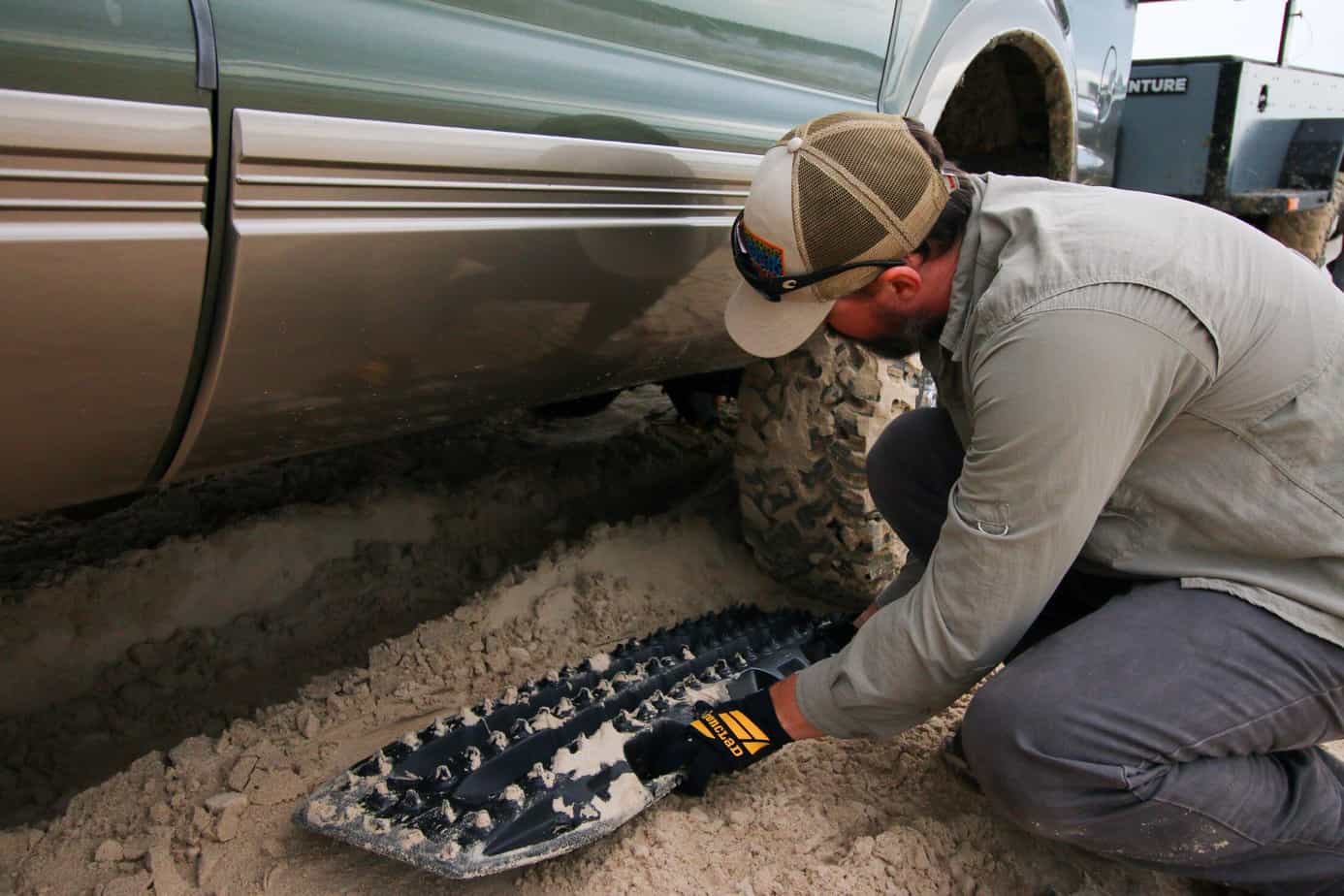 Stephen threw a set down under the truck again and again as we slowly moved forward, and eventually we were free. Further inspection revealed the problem, a failure of the auto-locking hubs. It’s an all too common problem for Fords, and one I hadn’t caught before the trip. It was frustrating, but we had made it through in one piece, albeit one very muddy and sandy piece.
Stephen threw a set down under the truck again and again as we slowly moved forward, and eventually we were free. Further inspection revealed the problem, a failure of the auto-locking hubs. It’s an all too common problem for Fords, and one I hadn’t caught before the trip. It was frustrating, but we had made it through in one piece, albeit one very muddy and sandy piece.
As the rain began to pour and we headed for home, I began to realize that I’d fallen in love with this small spit of sand. It may not be an epic adventure with challenges around every turn, but it’s a perfect place to reset with nature and think about everything in the world or nothing at all—possibly both. Regardless, I know that the next time I need a beach to think on, a shore to fish from, or some stars to sleep under, I have a weekend escape waiting on Texan shores.


